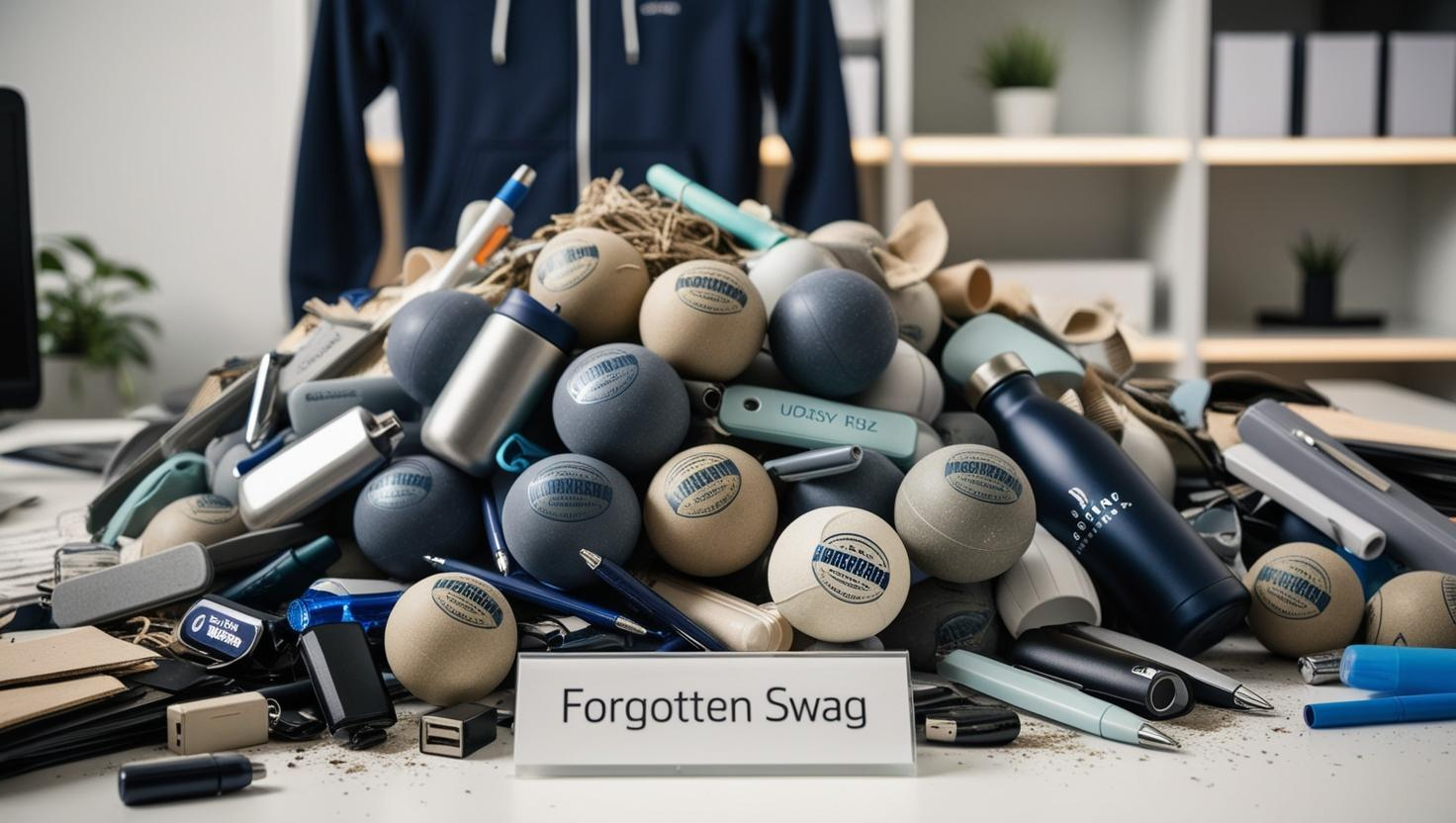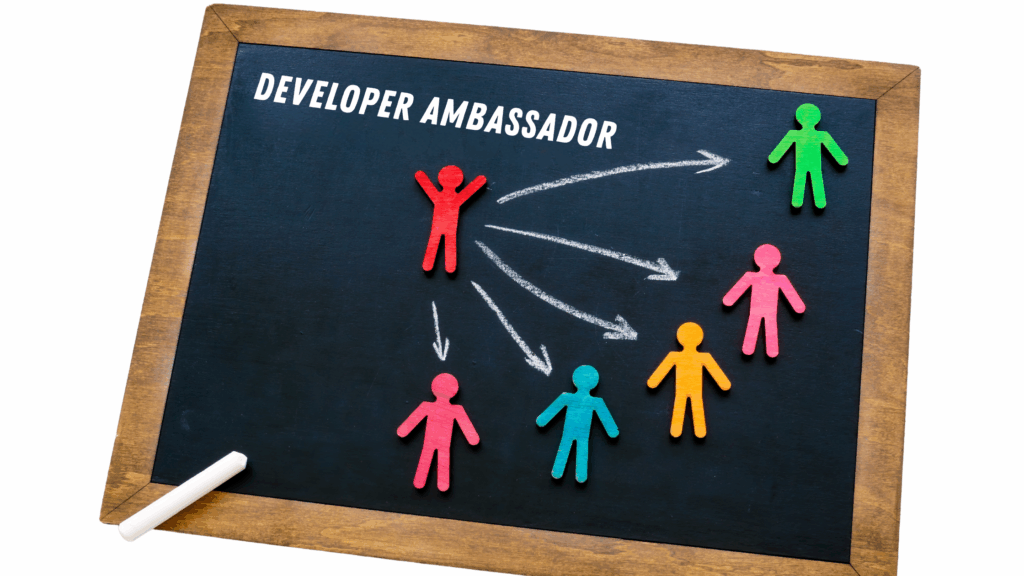Swag isn’t a strategy. That mountain of branded tote bags, pens, and T-shirts handed out like Oprah giving away cars? It’s not building the relationships companies think it is.
Companies often assume developer swag creates loyalty and engagement. A T-shirt today, a lifelong fan tomorrow. But let’s be honest—when was the last time a stress ball made anyone feel connected to your product?
People don’t want more stuff. They want to feel seen, appreciated, and confident they’re on the right path. This matters even more in developer communities, where genuine recognition and meaningful interaction consistently outperform promotional gimmicks.
This post breaks down how to make developer swag actually work and why the strongest “swag” isn’t physical at all.
Swag Should Support a Relationship—Not Try to Create One
Developer swag works best when it reinforces an existing connection, not when it’s used as bait. Free mugs don’t create loyalty—they just fill kitchen cabinets.
Think of swag as a souvenir, not an incentive. Tie it to meaningful moments:
- Recognizing top contributors
- Celebrating community milestones
- Thanking people for real engagement
When the item represents an achievement or experience, it becomes a symbol—not clutter.
Done well, swag also amplifies visibility. A high-quality hoodie or tote becomes a walking billboard, not because you forced it, but because people want to wear it.
Quality Over Quantity—Because Nobody Wants Junk
If swag is worth producing, it’s worth doing right. Nobody wants another cheap, ill-fitting corporate tee that feels like sandpaper. Low-quality swag isn’t just forgettable—it actively damages a brand by associating it with things people throw away.
Companies that get it right focus on premium items that people actually want to use or wear. A high-quality hoodie, for example, can turn into a favorite piece of clothing rather than a giveaway that gets tossed in a drawer. The goal isn’t to give people something with a logo on it—it’s to give them something they genuinely want.
Based on Stateshift’s experience with 240+ companies, developer communities particularly value quality and authenticity. Cheap swag actually damages credibility with technical audiences who can immediately spot low-quality promotional items.

Swag Should Be Useful or Meaningful—Preferably Both
The best developer swag serves a real purpose or carries emotional weight. If it doesn’t, it’s just another piece of clutter. A high-quality backpack that gets used daily? That’s useful. A custom illustration celebrating someone’s contributions to a community? That’s meaningful. But a cheap keychain with a logo on it? Straight to the junk drawer.
People keep swag that integrates into their daily lives. A well-made tote bag, a sleek notebook, or a premium hoodie? Those stay. A flimsy stress ball with a corporate logo? Not so much. Practicality ensures longevity—if swag is something people actually use, the brand stays visible for a long time.
Emotional connection is just as powerful. Limited-edition swag tied to a specific achievement—like a challenge completed, a milestone reached, or a personal contribution recognized—creates lasting value. A thoughtfully designed print, a handwritten thank-you note with a small gift, or an exclusive pin for top community members turns swag into a symbol of belonging rather than just another item.
The Best Swag is Earned, Not Handed Out Like Candy
Scarcity creates value. When swag is handed out to anyone who walks by a trade show booth, it feels cheap. But when it’s reserved for top contributors, engaged customers, or loyal fans, it suddenly means something.
Notion has mastered this approach by using swag to reward and empower their most passionate community members, influencers, and ambassadors. Instead of treating swag as a random giveaway, they distribute it strategically—offering high-quality items to top contributors who actively share and promote Notion within their networks. Notion even took things a step further with a branded swag truck in NYC, where they combined free coffee with community engagement, creating an unforgettable experience that reinforced their brand identity. This approach turned swag into a badge of belonging—something that community members proudly showcase, strengthening both loyalty and visibility.
This earned approach is fundamental to building engaged developer communities that drive product adoption—developers respect brands that recognize genuine contributions rather than attempting to buy attention through mass distribution.
Exclusive developer swag also creates social media moments. When brands give limited-edition swag to their most engaged community members, those recipients often share it online—tagging the company, showing off their reward, and generating buzz. This turns swag from just another promotional expense into a tool for increasing brand awareness and engagement.
The Most Powerful Swag Isn’t Even Physical
The best swag isn’t something that can be tossed in the trash—it’s something that lives online and carries real meaning.
Think about it. What do people really want? Status, recognition, and exclusive access. Digital swag—badges, exclusive content, early access to features—creates something that can’t be thrown away and gives people a sense of identity.
For example, Duolingo’s leaderboard badges gamify learning and give users public recognition for their progress. Discord’s Nitro perks unlock exclusive emoji, profile decorations, and community recognition. Digital swag offers something that lasts, reinforces engagement, and builds real loyalty—without filling up landfills.
For developer communities specifically, digital recognition like GitHub badges, contributor spotlights, or exclusive access to beta features often carries more weight than physical items because it acknowledges technical expertise publicly.
And don’t forget the simplest, most powerful form of recognition: personalized appreciation. A sincere email, a shoutout on social media, or featuring a community member’s work does more for engagement than a hundred logo-emblazoned USB sticks. As Jono Bacon puts it: “Instead of sending them a water bottle, why not highlight them on social media? Give the world examples of the real impact that these people bring into your community.”

FAQ: Developer Swag and Marketing
What’s the best way to use swag in developer marketing?
Tie it to real contributions. Make it high-quality. Or skip physical items entirely and use digital forms of status and recognition.
How does recognition build engaged developer communities?
By validating meaningful work publicly, offering exclusive access, and creating identity within the ecosystem. That builds the kind of loyalty you can actually measure.
The Takeaway: Stop Wasting Money on Junk
Swag isn’t inherently bad—it’s just often misused.
To make developer swag meaningful:
✔ Reinforce an existing relationship, rather than trying to start one.
✔ Prioritize quality—cheap junk hurts a brand more than it helps.
✔ Make it functional or emotional—give people something they’ll actually use or cherish
✔ Ensure it’s earned, not handed out—scarcity creates value.
✔ Leverage digital swag—status is the best giveaway of all.
✔ Validate people’s contributions—recognition is free and unforgettable.
Before printing another 5,000 logo keychains, ask: Would this actually matter to anyone? If the answer is no, rethink the approach. And if this post was helpful, share it—because, unlike bad swag, good insights are always worth spreading.
Stateshift helps companies develop recognition strategies that build authentic developer community engagement rather than wasting budget on ineffective promotional merchandise.





